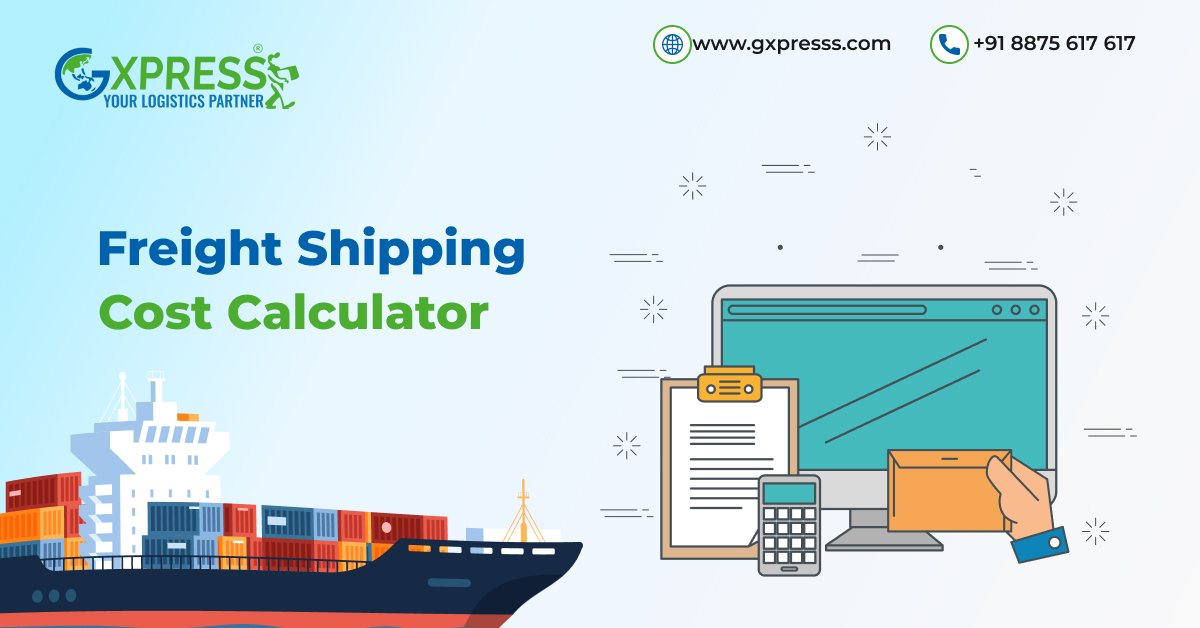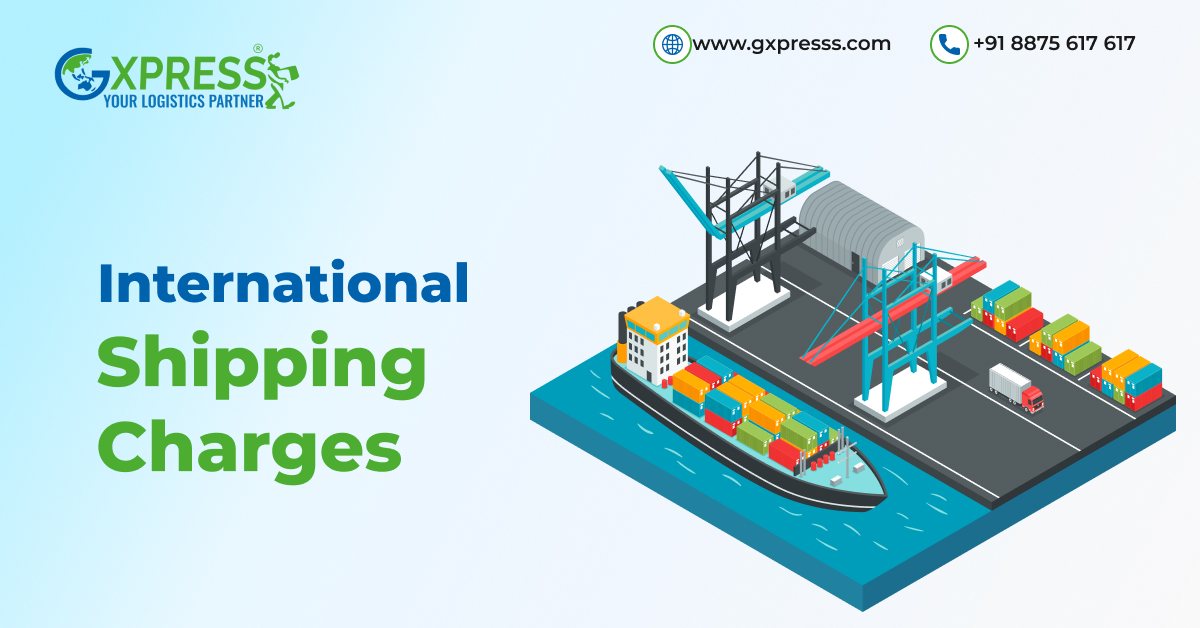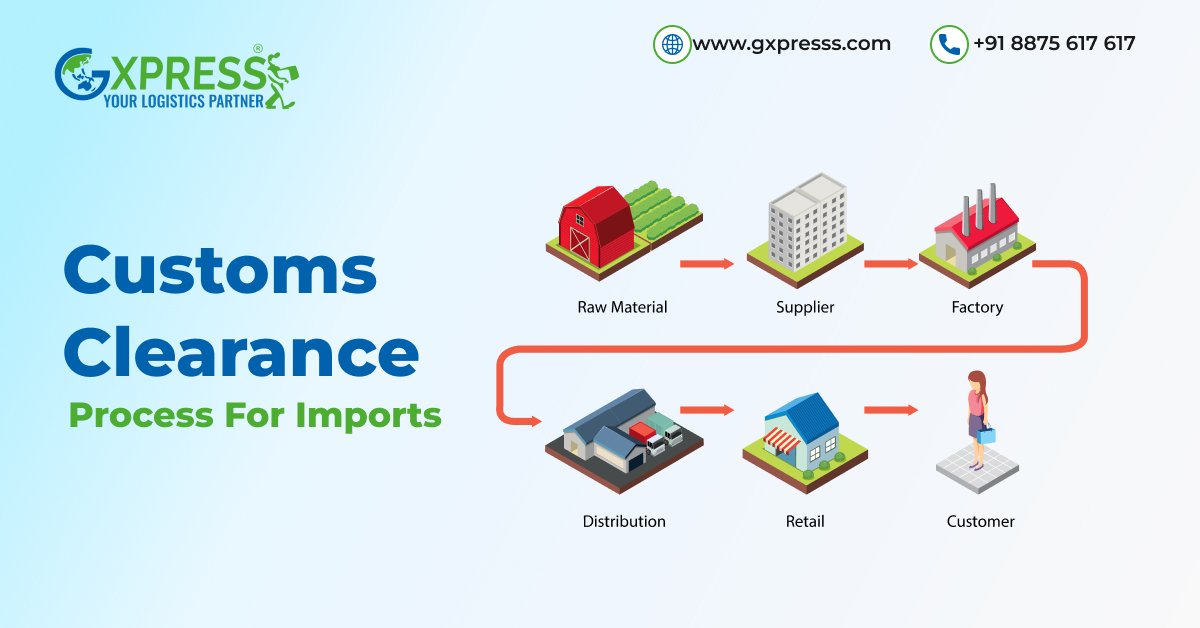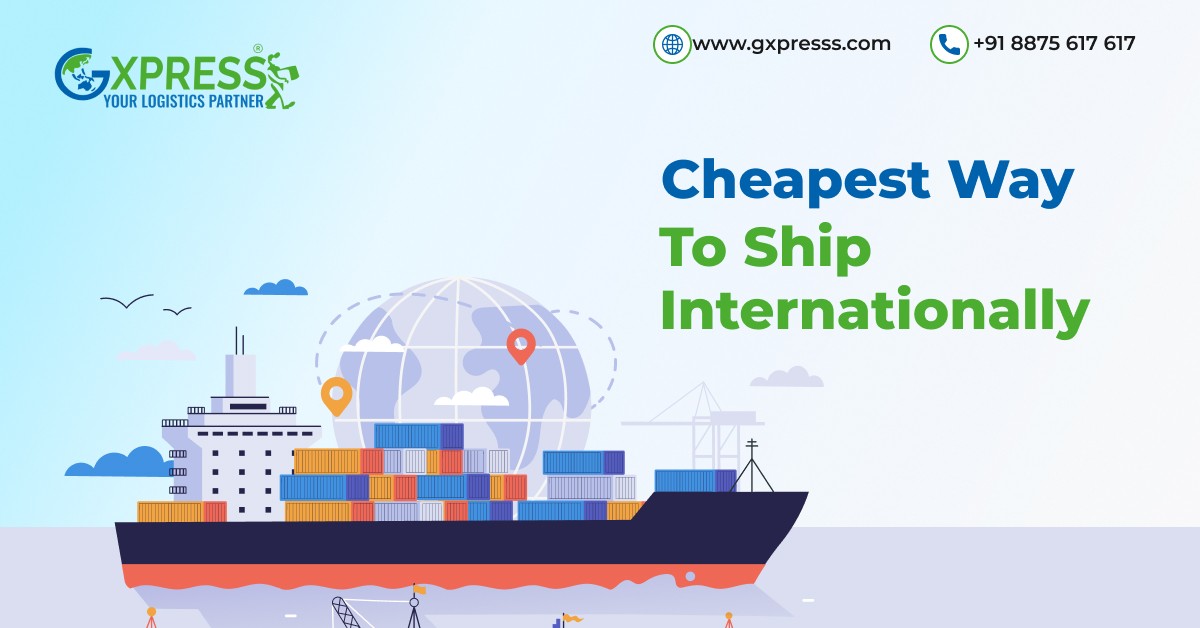September 26, 2025Freight8 min readBy Admin
Freight Shipping Cost Calculator: Estimate International Shipping Charges

A freight shipping cost calculator can make a huge difference for your business. Rahul, a small business owner in Mumbai, was so happy when he got his first bulk order from London. However, before long, he was so stressed out with excitement that he had to figure out the cost of shipping his products overseas.
Getting multiple freight forwarders to quote you different rates, encountering hidden charges, and being bombarded with terms like FCL, LCL and CIF, the whole procedure seemed like too much.
If you’d ever been in Rahul’s position, you would know that international freight estimation is not quite as simple as one might think. That’s why a lot of businesses nowadays use freight shipping cost calculators–digital tools created to ease the process and give you a reasonable estimate prior to the booking of a shipment.
Then, let us see how these calculators work, what factors enter, and how to use them to keep the logistics bills from surprising you.

Why It Is Hard To Estimate The Cost Of International Shipping
In the case of local deliveries, the international freight carries a very different handful of variables:- Different means of transport (sea, air, or multimodal)
- The distance between the place of departure and the place of arrival
- Customs duties, taxes, and costs of compliance
- Extra charges such as fuel, port handling, and security fees
- Packaging, insurance, and delivery of the last mile
What Is a Freight Shipping Cost Calculator?
A freight shipping cost calculator is a digital resource that provides an approximate expense for shipping items overseas based on basic shipment particulars. Generally, you are required to fill in the following information:- Where it is coming from and where it is going to (country, city, or port)
- Shipment description (FCL, LCL, air freight, or express)
- The weight and measurements of the goods
- Incoterms (FOB, CIF, DDP, etc.)
- Do you need special care for your goods? (Are they dangerous? Do they need to be kept at a certain temperature? Are they fragile?)
Key Factors That Affect International Freight Charges
Using a freight shipping cost calculator is helpful in seeing a rough picture of what the freight charges will be. The most prominent cost drivers are outlined below:1. Mode of Transport
a. Sea Freight
Better for heavy or voluminous goods with a face value of one ton or more, or a cargo container of 100 cubic meters and above, but with long delivery times.b. Air Freight
It is the most rapid way to ship and the most convenient if the goods are perishable, small in size but of high value, or if a customer is very pressed for time. Nevertheless, it is very expensive.c. Rail or Road (cross-border)
Generally, it is utilized for countries that have some common aspects or are land-linked and the trade is in compliance with the international legal norms related to it.2. Weight vs. Volume
One character that freight charges depend on is the chargeable weight. Volumetric weight (the space that cargo occupies in the container or plane) The higher of the two figures is the one that you will be charged on.3. Container Utilization
FCL (Full Container Load)
The cost is directly proportional to the space you will occupy. In other words, you pay for the entire container.LCL (Less than Container Load)
The cost, according to the volume or weight that you are using, is a fraction of the total one of a certain shipment. Hence, you share the space with others and a part of the total cost is split.4. Customs Duties & Taxes
Every country has its own tariff codes, duties, and GST/VAT rules. The customs calculator is more often than not used in providing estimates but can only display the parts of the country duty charges if it is linked to the customs databases.5. Surcharges & Fees
- Fuel surcharge
- Port handling charges
- Documentation fees
- Security and screening fees
6. Insurance
It is an option that is mostly taken and recommended in the case of cargo being of high valueHow to Use a Freight Shipping Cost Calculator Effectively
To get the most accurate results, do the following:1. Measure Accurately
Write down the exact weight and measurements of your shipment. Just a few extra centimeters can lead to an increase in volumetric weight.2. Know Your Incoterms
The nature of the shipment being FOB (Free on Board), CIF (Cost, Insurance & Freight), or DDP (Delivered Duty Paid) tells what costs you bear.3. Compare Modes of Transport
DO the calculations for both sea and air freight to find the best lukewarm between cost and time.4. Check Hidden Fees
Make sure that the calculator you are using is capable of handling port handling, documentation, and inland transport.5. Use Multiple Calculators
Each logistics company has different data. So, by checking several estimates, you get a range that is closer to reality.Shipping from India to the USA
Let’s say you are shipping 500 kg of textiles from Delhi to New York. The Air freight calculator may show: ₹6.5 – 7.2 lakhs (fast, within 5–7 days). The Sea freight calculator may show: ₹2.5 – 3 lakhs (economical, 25–30 days transit). By these, you can not only meet your customer deadlines but also be aligned with your budget.
Smart Alternatives to Just Relying on a Calculator
A calculator is a good come-along tool if you just need to figure out the approximate amount of something quickly. However, for large or recurring shipments, businesses usually: trim the freight forwarders directly for their own quotes. Utilize the freight markets that enable bidding among carriers to help select the lowest offering. Take advantage of the logistics partners who provide live tracking, GST-compliant billing, and dedicated account manager services. Such measures provide more freedom and usually more reasonable rates.Benefits of Using a Freight Shipping Cost Calculator
1. Transparency
Only the most honest transactions in terms of cost are provided to users.2. Speed
Emails are generated instantly instead of taking time for the manual version to be done.3. Comparison
One can evaluate carriers as well as modes quickly without wasting much time.4. Budgeting
It is much easier to plan supply chain expenses.5. Customer Communication
Accurate delivery cost estimates can now be given to buyers even before purchasing products.Conclusion
Rahul, along with thousands of other businesses involved in global trade, sees a freight shipping cost calculator not just as a tool, but rather as a confidence provider. It helps international logistics take the guesswork out of its path; it aids budgeting smarter; and, very importantly, it helps to remain competitive in a rapidly moving global market. However, you should also keep in mind that the calculations they present are just rough estimates of the actual costs. The best firms take full advantage of these tools as well as the expertise of the freight forwarders who are well aware of trade dynamics, customs regulations, and real-time shipping challenges. Such that if the international shipping side is your company’s backbone, the strategy of doubling digital tools with the intervention of the experts will surely make accurate estimations of the costs and keep the supply chain running.Frequently Asked Questions (FAQs)
1. What is a freight shipping cost calculator?
This is a web-based program that provides an estimated cost for the international shipping of a given package based on factors such as weight, volume, origin, destination, and mode of transportation.2. How accurate are freight calculators?
They provide almost exact estimations but they will not necessarily include the likes of customs duties, seasonal fees, or special handling costs. Always check with a freight forwarder.3. What details do I need to use one?
Information regarding the shipment weight, dimensions, locations for pick up and delivery, container type (FCL/LCL), and transport mode (air/sea) is necessary.4. Do calculators include customs and taxes?
A few offer duty and tax estimations; however, most of them do not account for customs and taxes. These rely on the destination country’s tariff regulations.5. Which is cheaper air freight or sea freight?
Usually, shipping via the sea is more economical for a heavy or large volume of goods while air shipping is more rapid but costly.6. Can businesses rely only on calculators for shipping costs?
Calculators are handy for getting a quick ballpark figure of the cost. However, for large or frequent shipments, it is advisable to obtain detailed quotes from logistics providers.Share this article:



